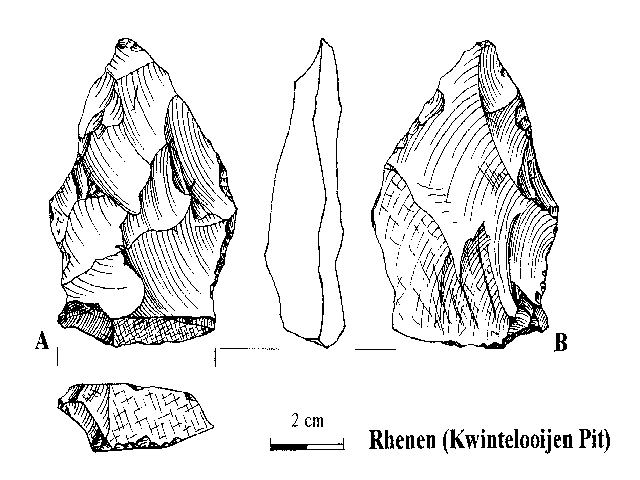Neanderthal children and their flints
Keywords:
Middle Palaeolithic, Upper Palaeolithic, Children, Flint knappingAbstract
As pioneer studies at the Magdalenian sites of Pincevent and Etiolles have shown, refitting analyses can reveal the presence of those learning the craft of flint knapping, i.e. children. This approach was successful especially at Upper Palaeolithic sites. Learners can be recognized by their incompetent flaking, and also by typical beginners’ errors such as ‘face battering’ and ‘stacked steps,’ as shown in experiments by Shelley (1990). For reasons unknown to me, and in contrast to the Upper Palaeolithic, it is quite unusual to come across children in the literature about the Lower and Middle Palaeolithic. In most cases, ‘flint failures’ from these periods are attributed to poor-quality raw material. In this paper it is argued, by means of several examples, that in many cases children may be responsible.
In his monograph about the main Saalian find level in the Maastricht-Belvédère quarry, De Loecker (2006) mentions that at Site K relatively many cores show phenomena such as stacked steps and face battering. It is suggested that this reflects the presence of children practising their flint knapping skills, rather than the poor quality of the local raw material. The absence of the classic Levallois technology, and the use of the simpler discoidal cores instead, may also be seen in this light.
This article describes a series of implements from several sites of the Rhenen Industry in The Netherlands, dating from the Early Middle Palaeolithic. A ‘pic’ and a handaxe-like core reveal incompetent flaking, and the pic-like object also shows ‘face battering’ on both faces. These artefacts, as well as several small cores and a ‘micro-Levallois-flake,’ are interpreted as specimens made by learners in the art of flint working. A miniature handaxe, only 4.4 cm long, is tentatively interpreted as an instructive toy made by an adult for a child. Finally, a few enigmatic objects from the Late Middle Palaeolithic in the northern parts of The Netherlands are also interpreted as pieces worked by children.
In the discussion chapter, the literature is searched for further possible examples of this phenomenon. It is concluded that the activities of children are overlooked in studies of the older phases of the Palaeolithic. Read more...


